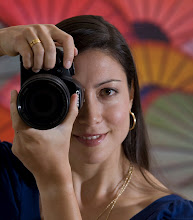In the early 16th century, Seville was awarded a monopoly on Spanish trade with the Americas and grew to be one of the largest and richest cities in the world. This growth brought an influx of both artists and architects. As a result of its diverse history, Seville displays a unique fusion of Moorish, Gothic, Renaissance, Baroque and Romantic architectural styles.
The lively streets of the city are packed with tapas bars, flamenco theaters and colorful old churches and palaces. In the evenings, street musicians serenade tourists by lamplight from the town's many parks and plazas, which are lined with orange, palm and jacaranda trees.
 The 97m high La Giralda tower was originally built in the 12th century by Abu Yacub Yusuf, the emperor of Morocco, as the minaret for a mosque. In the 16th century, it was converted into a bell tower for the cathedral.
The 97m high La Giralda tower was originally built in the 12th century by Abu Yacub Yusuf, the emperor of Morocco, as the minaret for a mosque. In the 16th century, it was converted into a bell tower for the cathedral. Seville's massive Gothic cathedral was built from the 13th to the 15th centuries. It's the world's largest Gothic church and the world's third largest cathedral behind Saint Peter's in the Vatican and Saint Paul's in London. The remains of Christopher Columbus are contained within the cathedral.
Seville's massive Gothic cathedral was built from the 13th to the 15th centuries. It's the world's largest Gothic church and the world's third largest cathedral behind Saint Peter's in the Vatican and Saint Paul's in London. The remains of Christopher Columbus are contained within the cathedral. Part of the organ, with the Capilla Mayor behind. The Capilla Mayor is a Gothic altarpiece of gilded and polychrome wood, built in the 15th and 16th centuries; it holds more than 1000 carved figures representing scenes from the Bible.
Part of the organ, with the Capilla Mayor behind. The Capilla Mayor is a Gothic altarpiece of gilded and polychrome wood, built in the 15th and 16th centuries; it holds more than 1000 carved figures representing scenes from the Bible. An example of Seville's layered architectural styles: the cathedral's Puerta del Perdon
An example of Seville's layered architectural styles: the cathedral's Puerta del Perdon The Plaza de Toros de la Real Maestranza was constructed in the 18th and 19th centuries. Seville is the second largest center for bullfighting in Spain, and the season runs from April to October.
The Plaza de Toros de la Real Maestranza was constructed in the 18th and 19th centuries. Seville is the second largest center for bullfighting in Spain, and the season runs from April to October. A flamenco performance in Barrio de Santa Cruz; flamenco originated in Andalusia
A flamenco performance in Barrio de Santa Cruz; flamenco originated in Andalusia




No comments:
Post a Comment